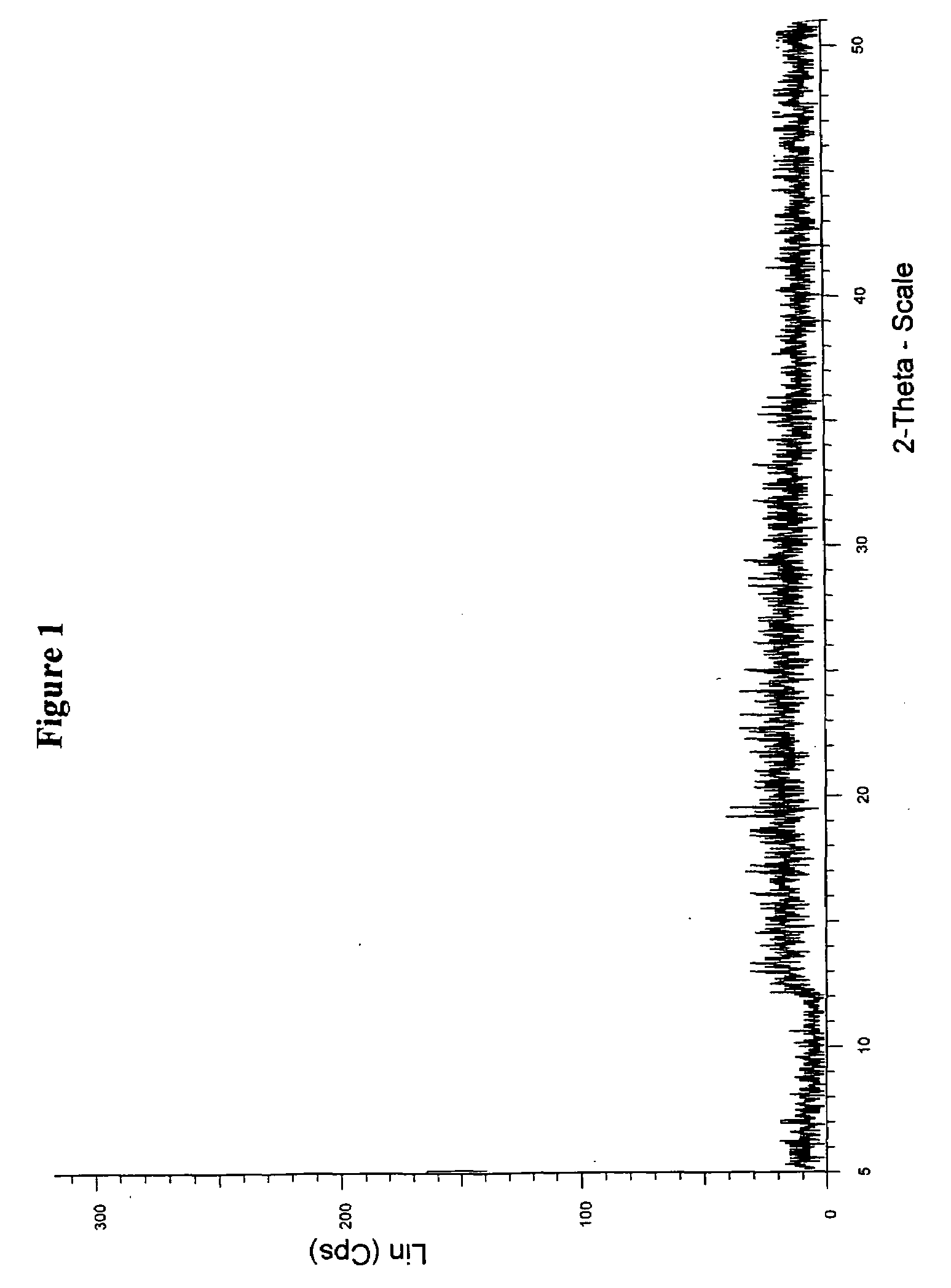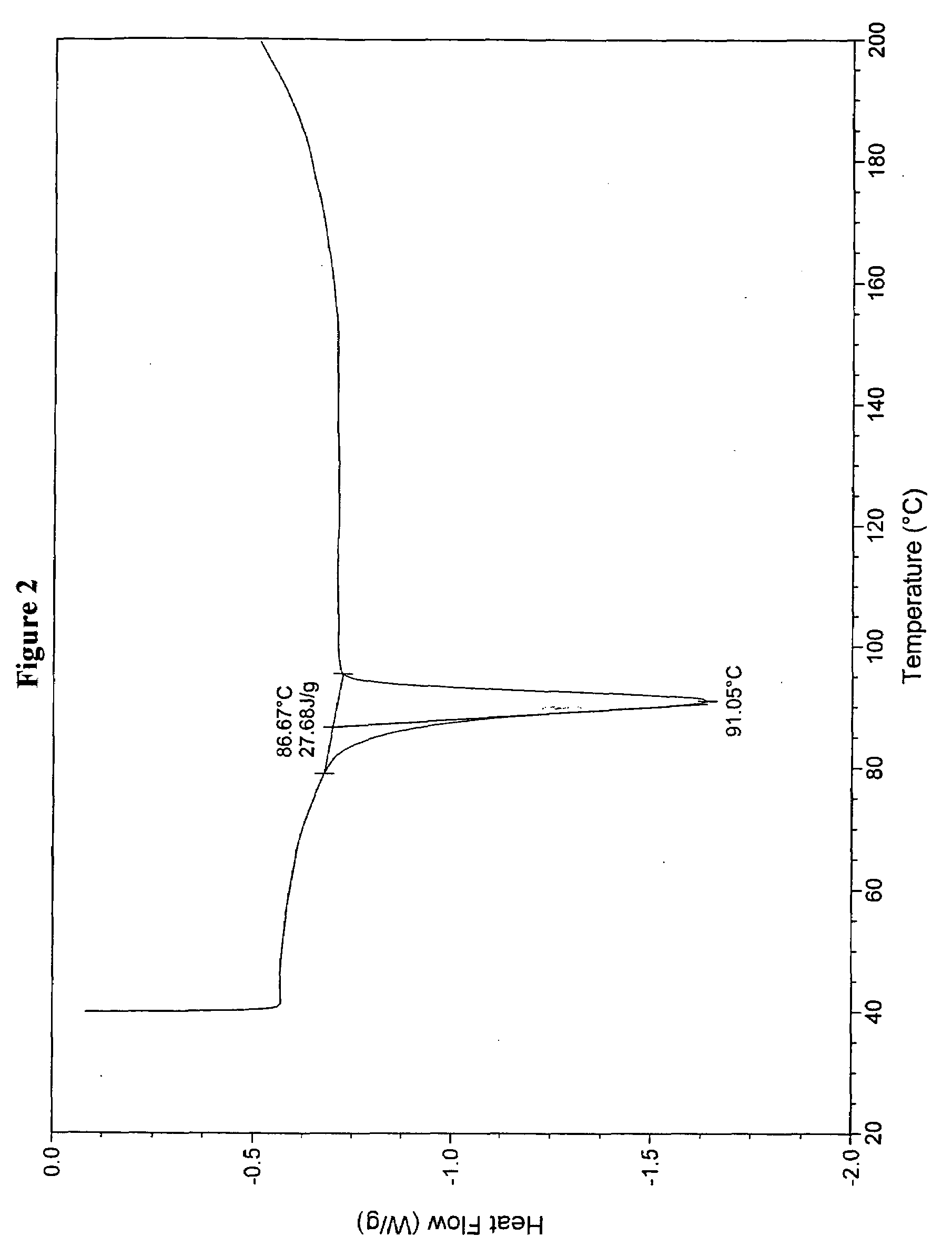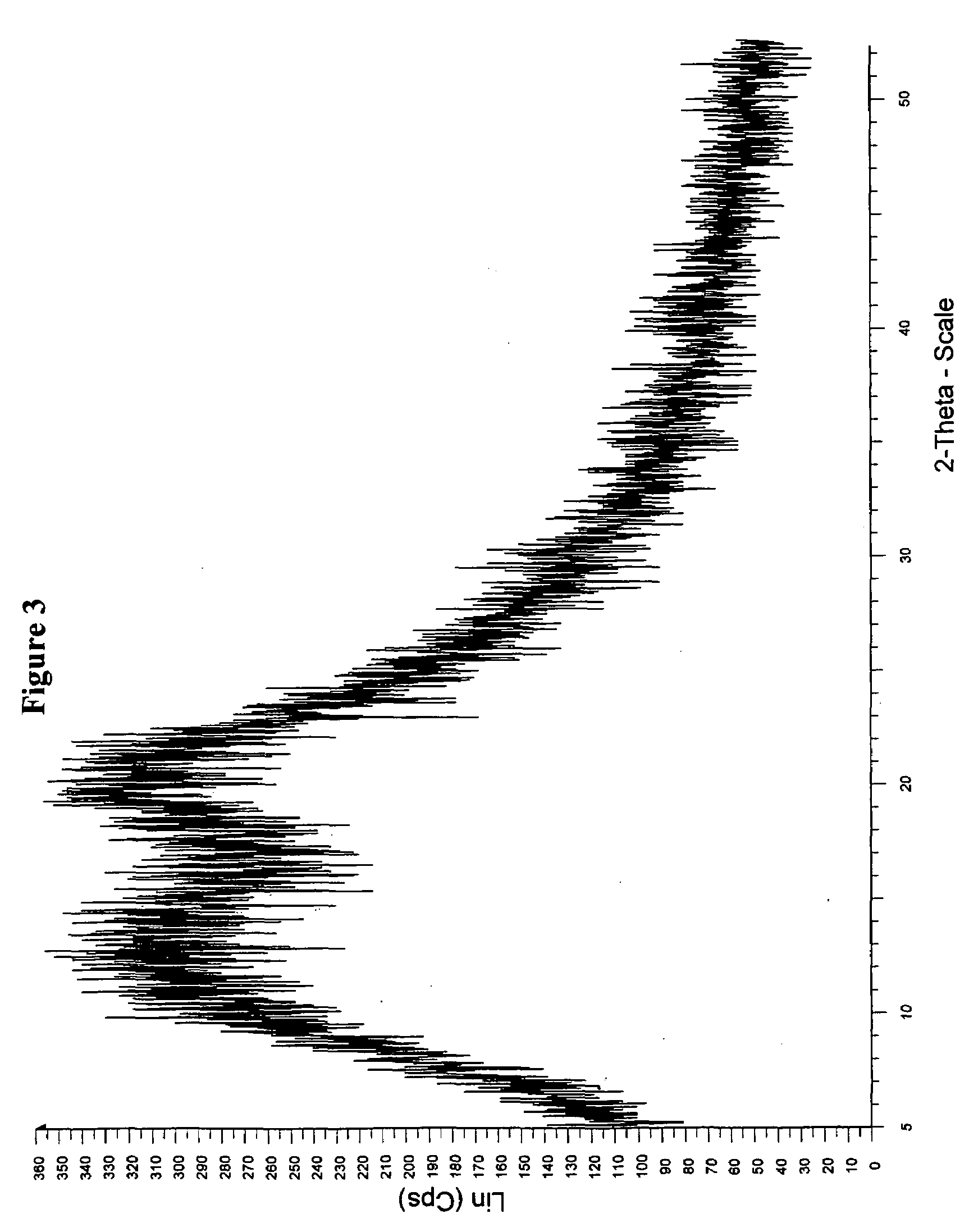Preparation of solid coprecipitates of amorphous valsartan
a technology of amorphous valsartan and coprecipitate, which is applied in the field of new coprecipitate of amorphous valsartan, can solve the problems of inability to stabilize pure amorphous valsartan, inability to provide means for direct use of pure amorphous valsartan, and inability to provide stable pure amorphous valsartan
- Summary
- Abstract
- Description
- Claims
- Application Information
AI Technical Summary
Problems solved by technology
Method used
Image
Examples
example 1
Preparation of Mixture of Amorphous and Crystalline Valsartan
[0083]Crude valsartan (10 g, obtained by the procedure described in Example 16 of U.S. Pat. No. 5,399,578) was dissolved in methyl propyl ketone (50 ml) at ambient temperature, and suspension mixture was heated to 50° C. to obtain a clear solution. To the solution was then slowly added Hexane (40 mL), and cooled the solution to an ambient temperature. The solution was kept aside for about 1 hour to crystallize the solid mass. The product was then isolated by filtration and dried at 50-50° C. to constant weight to obtain 6.5 g solid product (yield 65%). The powder X-ray diffractogram (FIG. 1) and DSC (FIG. 2) of the obtained product showed that the resulting substance contained most amorphous material, but with some crystalline valsartan can be clearly detected.
example 2
Preparation of Coprecipitate of Valsartan with Polyvinylpyrolidone (PVP)
[0084]Method A: Valsartan (3 g, obtained by the procedure described in Example 16 of U.S. Pat. No. 5,399,578) and 9.0 g polyvinylpyrolidone (PVP, K=30) was dissolved in ethanol (150 ml) at ambient temperature, and suspension mixture was heated to 50° C. to obtain a clear solution. The solvent was evaporated through distillation under vacuum (30-80 mm Hg) at about 40° C. to about 70° C. The product was then isolated (about 11 g) when no visible liquid was remained and drying was continued under vacuum at about 40° C. for 24-48 hours to remove the solvent. The powder X-ray diffractograrm and DSC of the solid coprecipitate showed that the resulting substance was amorphous coprecipitate.
[0085]Method B: Valsartan (5 g, obtained from Example 1 of this invention) and 5.0 g polyvinylpyrolidone (PVP, K=30) was dissolved in acetone (100 ml) at ambient temperature, and suspension mixture was heated to 50° C. to obtain a cl...
example 3
Preparation of Coprecipitate of Valsartan with Polyvinylpyrolidone Vinyl Acetate Copolymer (PVP-VA64)
[0088]Method A: Valsartan (5 g, obtained by the procedure described in Example 16 of U.S. Pat. No. 5,399,578) and 8.0 g polyvinylpyrolidone vinyl acetate copolymer (PVP-VA64, Plastone S-630, K=26-34)) was dissolved in ethanol (150 ml) at ambient temperature, and suspension mixture was heated to 50° C. to obtain a clear solution. The solvent was evaporated through distillation under vacuum (30-80 mm Hg) at about 40° C. to about 70° C. The product was then isolated (about 11.5 g) when no visible liquid was remained, and dried under vacuum at about 40° C. for 24-48 hours to remove the solvent. The powder X-ray diffractograrm and DSC showed that the resulting substance was amorphous coprecipitate.
[0089]Method B: Valsartan (5 g, obtained from example 1 of this invention) and 5.0 g polyvinylpyrolidone vinyl acetate copolymer (PVP-VA64, Plastone S-630, K=26-34) was dissolved in acetone (100...
PUM
| Property | Measurement | Unit |
|---|---|---|
| melting points | aaaaa | aaaaa |
| melting points | aaaaa | aaaaa |
| melting points | aaaaa | aaaaa |
Abstract
Description
Claims
Application Information
 Login to View More
Login to View More - R&D
- Intellectual Property
- Life Sciences
- Materials
- Tech Scout
- Unparalleled Data Quality
- Higher Quality Content
- 60% Fewer Hallucinations
Browse by: Latest US Patents, China's latest patents, Technical Efficacy Thesaurus, Application Domain, Technology Topic, Popular Technical Reports.
© 2025 PatSnap. All rights reserved.Legal|Privacy policy|Modern Slavery Act Transparency Statement|Sitemap|About US| Contact US: help@patsnap.com



